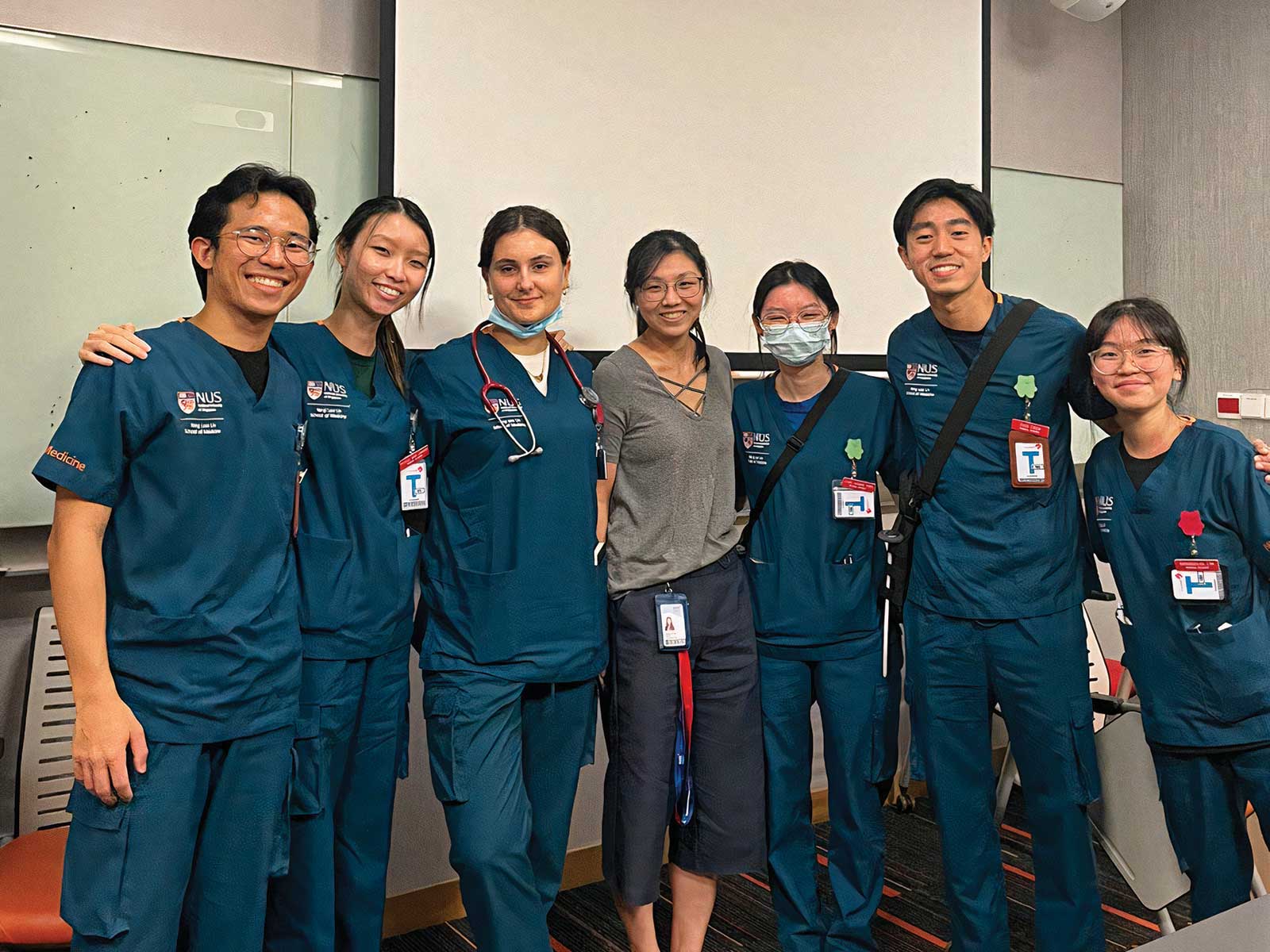
Issue 50
May 2024
PEOPLE OF NUS MEDICINE
By Natalie Tan, Staff Writer
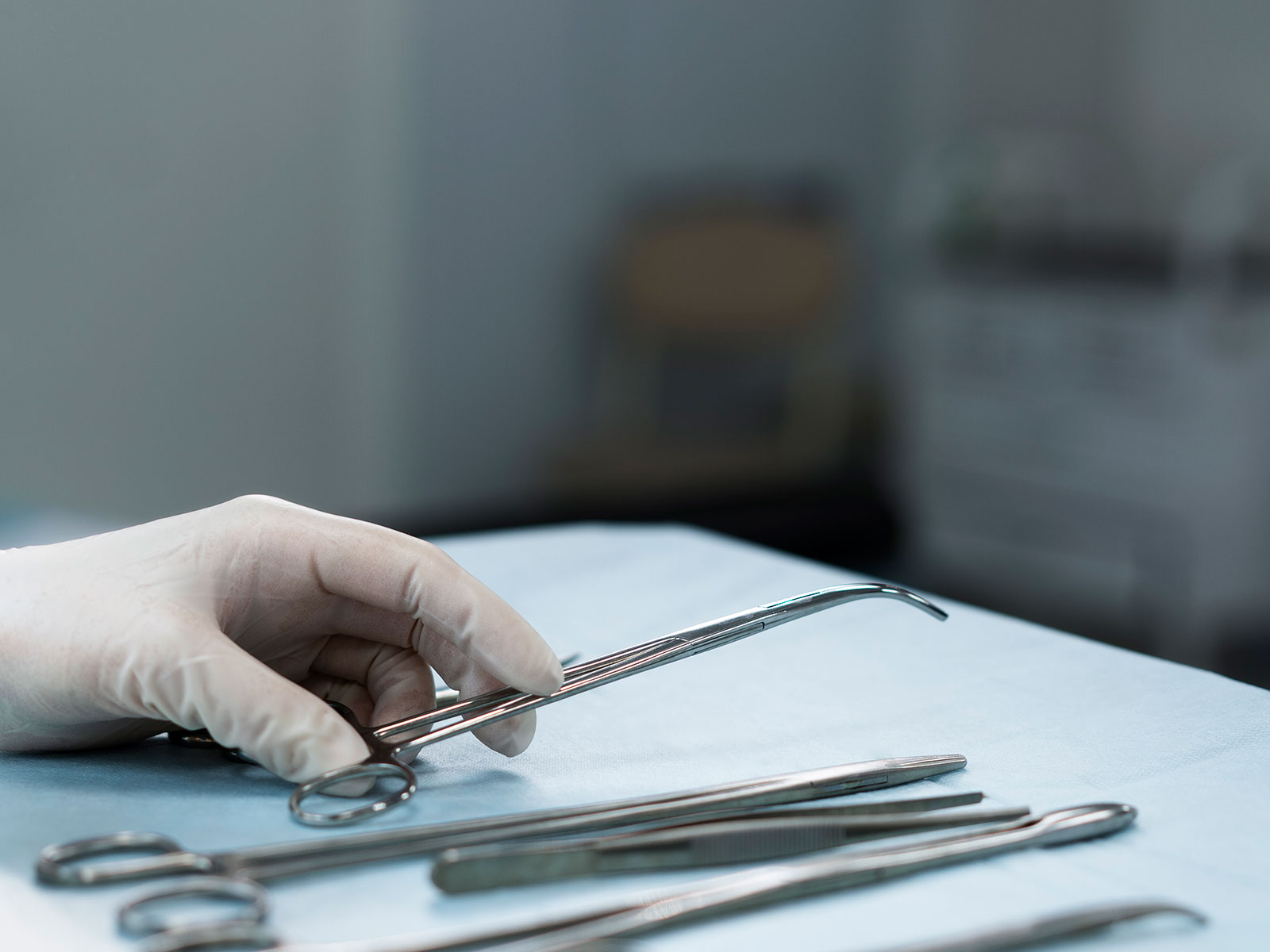
Working with dead bodies isn’t everyone’s cup of tea. But in the eyes and hands of Muhammad Sufie Bin Slamat, 31, a trainee prosector with the Department of Anatomy of the Yong Loo Lin School of Medicine, National University of Singapore (NUS Medicine), human cadavers are very special legacy gifts to medical education and deserve the utmost respect and gratitude.
Slowly, tenderly, almost lovingly, Sufie’s scalpel traces an incision in the arm of the cadaver lying on the mortuary table.
An open textbook on human anatomy rests on the edge of the table: he glances at the page occasionally before turning to the task at hand. This is the third cadaveric dissection that Sufie is undertaking and he is flying solo, operating for the first time without the usual guidance of his eagle-eyed supervisor, Dr Krishnan Jayabharathi.
The former forensic technical officer from the Health Sciences Authority (HSA) had put his hand up when a prosector’s post became vacant at NUS Medicine last year. His previous job assisting the pathologists at HSA during post-mortems had stoked his interest in a career focused on working with human anatomy and a prosector’s role in a medical school seemed the place where he could pursue his interest.
Sufie’s interest in human biology began during his school days. It led to him studying for a bachelor’s degree in bioscience before he joined the HSA as a forensic technical officer. “The job was a golden opportunity for me to study human anatomy,” he said. His work primarily revolved around assisting pathologists in post-mortems as well as operational duties such as arranging for the release of bodies to the next-of-kin and liaison with other government agencies involved in the process. His thirst for a more hands-on role working with anatomical structures and human tissue led him to the door of the Department of Anatomy at NUS Medicine.
An uncommon and niche profession in Singapore, the job of a prosector requires a minimum of an undergraduate degree in a science-related course, with experience and knowledge of human anatomy.
Kindling the flame
An uncommon and niche profession in Singapore, the job of a prosector requires a minimum of an undergraduate degree in a science-related course, with experience and knowledge of human anatomy. Sufie had the degree and some experience assisting in post-mortems. But that was a long way off from the intricate knowledge of anatomy and hands-on dissection experience required of a prosector in a medical school. Enter Dr Krishnan Jayabharathi, Senior Lecturer at the Department of Anatomy. Believing there was potential for the flames of interest that she saw in Sufie to be fanned, she placed him under her close supervision.
A year later, the trainee prosector displays the steadiness of hand and lively curiosity for all things anatomical which Dr Jaya said are also essential for the job. It’s certainly one that goes beyond the usual nine-to-six gig.
To start him off, Dr Jaya got him to read widely and intensively on human anatomy and dissection. He pored over books from the Anatomy Library, cross-referencing to learn about the different dissection methods and approaches. On average, Sufie takes four weeks to dissect a body part, regularly reviewing his work and progress with Dr Jaya. She was impressed by her trainee’s diligence and eagerness to learn as well as the meticulous manner in which he worked. Sufie proved that being a blank canvas is no obstacle to doing something well, with his efforts drawing compliments from various academic staff. So far so good, his quick smile and bright eyes indicated.
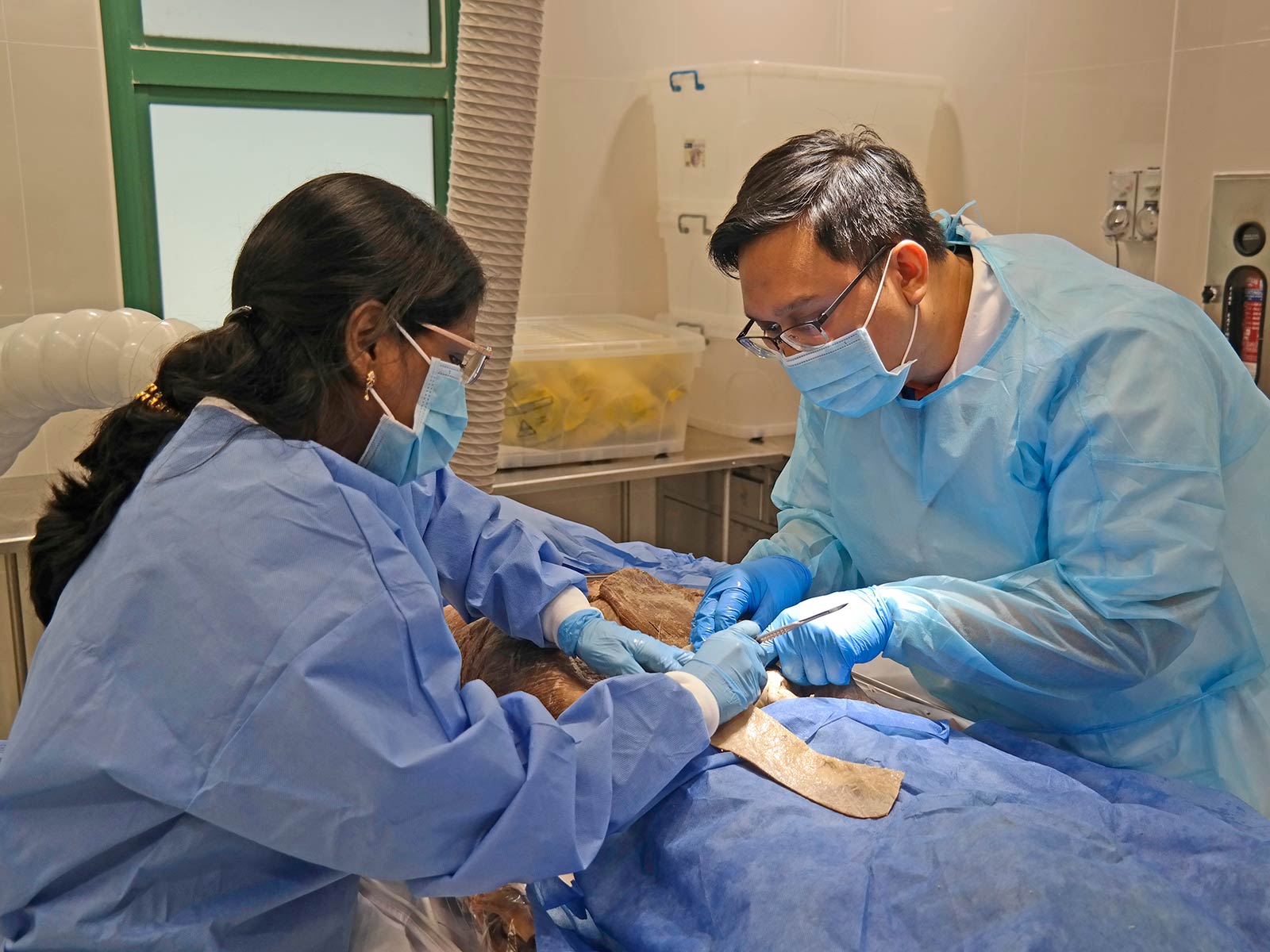
Sufie dissecting the muscular-skeletal system of a cadaver with Dr Jaya’s assistance.
The art of dissection
The work is absorbing, requiring steady hands, an ability to stand for hours, Zen-like focus as well as unflinching attention to detail. He has two dissection sessions per day—in the morning and afternoon, for two hours each time. Cutting, slicing, peeling, lifting flaps of tissue require delicate care and preparation and much thought is given to where the incisions are made.
Before he starts dissecting, with reference books within reach, he finds landmarks on the body parts and then proceeds to make the first cut. He has dissected the body parts of three cadavers thus far, the first two with Dr Jaya’s help. Under her guidance and making steady progress, he has moved on to dissecting parts of the muscular-skeletal system of a cadaver. The specimens are for Anatomy lessons.
Dr Jaya explained that the cadaver Sufie is working on is that of a well-built man with good musculature. It is an unclaimed body that had been sent to the School by the National Organ Transplant Unit (NOTU). The office is Singapore’s coordinating agency for organ and whole-body donations. These days, nearly all bodies are donated, bequeathed by their once living owners or family members to medical education and research. Donated cadavers come with information about the deceased’s cause of death, which is useful for the study of abnormal pathology. Cadavers are mainly used for undergraduate teaching and surgical workshops at the Department of Anatomy’s dissection rooms.
With intense concentration, Sufie makes incisions precisely and carefully. Dissecting requires the same tools used in surgical procedures, like scalpels and forceps. But a cadaver is different from a live body, so there are differences in the type of equipment and tools used.
“Some parts of the skin have less fat, so instead of a 21mm scalpel, I use the 10mm scalpel. It’s also not recommended to use sharp equipment when preserving blood vessels, so we usually use blunt scissors for this,” said Sufie.
Dr Jaya gestures down the arm of the cadaver, revealing, along with a few neat sutures, an otherwise perfectly dissected vein that rests in its rightful place. For a beginner, Sufie has done an impressive job of cutting to display the muscular-skeletal system of the cadaver. Soon, he will move on to dissect the joints and internal organs. Finesse, a steady hand and eye and a constant awareness that the body being worked on was once a living person who must always be handled gently and respectfully—these are the guiding principles a prosector must always bear in mind. “Dissection is an art—you need to take your time and internalise the parts that you are looking at and working with,” reminded Dr Jaya. While Sufie isn’t expected to know the technical terms of the human anatomy, he has made it a point to learn them to muster the knowledge and skills required.
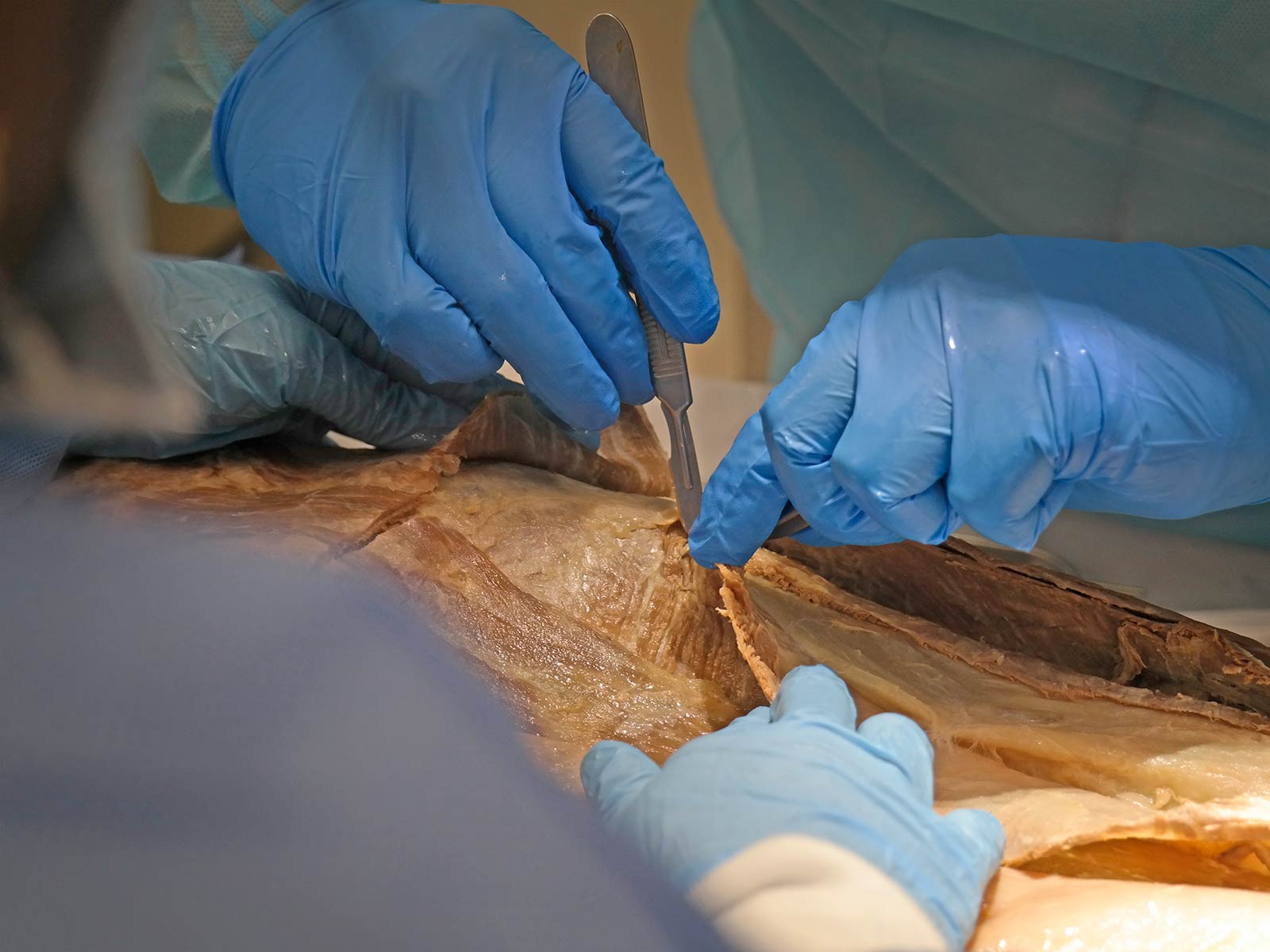
Dissecting the abdominal wall using a 21mm scalpel blade.
Guardian of Silent Mentors
Another aspect of the prosector’s job at NUS Medicine Anatomy is the role of coordinator for the Silent Mentor programme. It is one that has opened his eyes to the realisation that his job is one that goes beyond the physical preparation of human remains for medical education.
The Silent Mentor programme is a body donation initiative started in 2014 by the Department of Anatomy. The programme is critical in helping medical, nursing, dental and other health-related science students to learn the complex anatomy of the human body and provide researchers with an essential tool for discoveries to help patients.
Body donations to the NUS Yong Loo Lin School of Medicine are greatly appreciated by the students and faculty. Each year, students and faculty organise and participate in an Appreciation Ceremony for these Silent Mentors as a mark of respect and gratitude to the individuals whose bodies have been used to impart invaluable anatomical knowledge to the students. A solemn send-off attended by students and staff marks the end of every cadaver’s stay at the Department.
Sufie’s involvement in the Appreciation Ceremony and send-off for the Silent Mentors has meant engaging with their family members. These occasions have reinforced his conviction that while his job revolves around bodies, the ultimate objective is the training and education of doctors, nurses and other healthcare professionals.
It is an understanding shared by his mother, who he says has been a staunch supporter of his work, once reminding him of the importance of working respectfully with Silent Mentors at all times. This is important, he acknowledges, because desensitisation to the work is inevitable. “Once you forget that this body used to be a living soul with emotional connections to people who loved them, lived life, and had stories about that life to share, you are missing the essence and privilege of this job,” he recalled her saying.
Silent Mentors are of fundamental importance in the education of doctors and healthcare professionals. They are the first patients that students encounter in their training and impart not only knowledge of human anatomy but also humanistic values. Digital technology can be used to enhance the learning process but will not be able to replace Silent Mentors.
Silent Mentors: Students’ first patients
Each donated cadaver is kept for a maximum period of three years, before the Silent Mentor’s family is invited to specify the kind of final send-off they would like for their loved one. In preparation for sending off the Silent Mentors, students do a complete suture of the body, closing up openings and ensuring that body parts and internal organs are correctly in place.
While human anatomy can be taught using technology, there is no substitute for learning through working with actual human bodies, said NUS Medicine Department of Anatomy head, Associate Professor George Yip. “Silent Mentors are of fundamental importance in the education of doctors and healthcare professionals. They are the first patients that students encounter in their training and impart not only knowledge of human anatomy but also humanistic values. Digital technology can be used to enhance the learning process but will not be able to replace Silent Mentors. What Sir William Osler said about books in medical education is also applicable to digital technology: ‘To study the phenomenon of disease without books is to sail an uncharted sea, while to study books without patients is not to go to sea at all.’”
Thanks to publicity about body donation, more people are willing their mortal remains to medical education and research. “The people who donate their bodies to the School, their families…they are really magnanimous to do this,” said Dr Jaya.
Would Sufie or her do likewise? He explained that his Muslim faith requires bodies to be buried as soon as possible after death, while Dr Jaya said consideration for her family’s discomfort has closed the door to the possibility for herself. She recalled a conversation with her students during a dissection class. They had noticed that two human hearts being studied differed in sizes. “I told them, no, all their donors had big hearts.”
Click here to see the Appreciation Ceremonies for Silent Mentors.
More from this issue

PEOPLE OF NUS MEDICINE
The French Connection
ALL IN THE FAMILY
Combating Antimicrobial Resistance in Primary Care
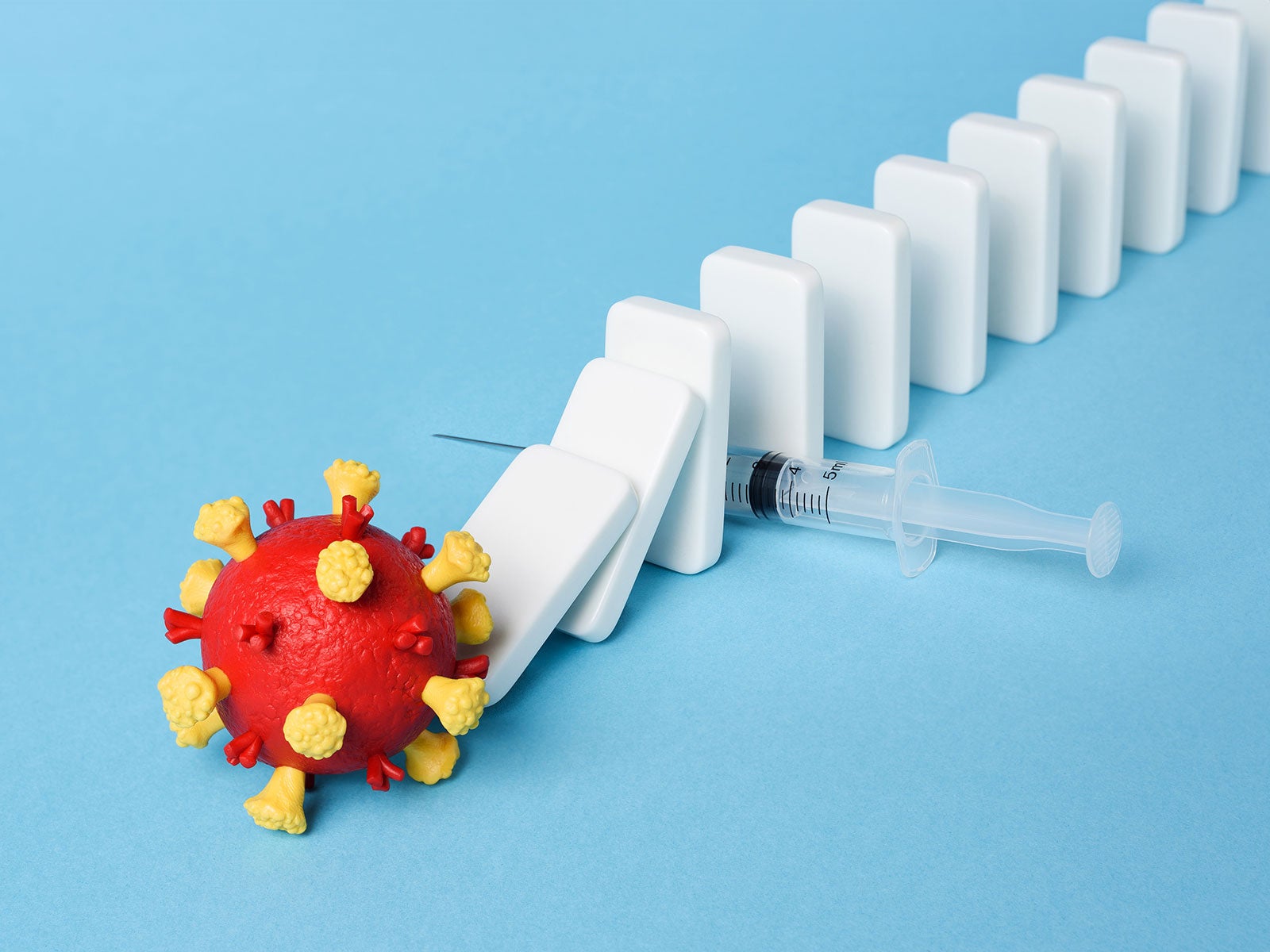
PEOPLE OF NUS MEDICINE
Appreciating the Diversity of Medical Learning
